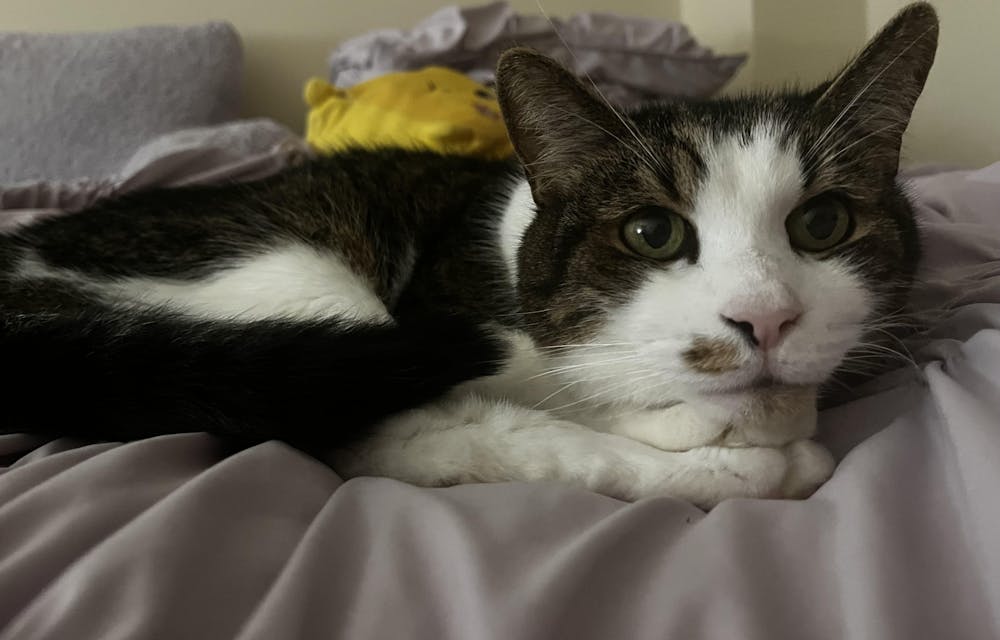
I picked up my first foster cat, Tippy Montana, from the Maryland Society for the Prevention of Cruelty to Animals (SPCA) nearly three weeks ago. I didn’t know much about Tippy when I agreed to foster him, just that he was thirteen years old, a tabby cat and that he was extremely depressed in the shelter.
When I opened the carrier in my apartment, Tippy immediately jumped out. I took this as a good sign — until he dashed into the bathroom and hid behind the toilet. When he came out, it was only to move to a different hiding spot: the closet.
I was left feeling somewhat disheartened. I knew it was unrealistic to expect him to instantly trust me, but I had nevertheless hoped for that to be the outcome. I tried to lure him out of hiding with food, but he could not be swayed.
At this point I decided to simply go about my day-to-day life and hope that he would learn to trust me with time. I’m a First-Year Mentor and the day I got Tippy was the second day of Orientation Week, so I expected that I would be very busy and allow Tippy a lot of time on his own to adjust to his new (albeit temporary) home.
All of this changed when, the day after I got Tippy, I tested positive for coronavirus (COVID-19). I stared at the rapid test on my desk then looked to Tippy, who was hiding behind the toilet again. I explained to Tippy that we would be spending a lot of time together before calling all of my friends and telling them that they may have been exposed to COVID-19.
Despite my fear that Tippy would be unable to properly adjust with me by his side literally all of the time, we quickly got closer as we quarantined together in my bedroom.
I finally got to look into his green eyes and see the brown spot on his otherwise white chin. He would walk around the room when I was silent for long periods of time, and I started to understand that although he was nervous, he was not aggressive.
I read about how it was okay to block off certain hiding spots, so I rearranged my bathroom so that he would no longer be able to go behind the toilet (it was depressing for both of us), and he started perching on the windowsill or laying in the bathtub.
By the time I finished my quarantine, Tippy and I had become much closer. I had gotten him to purr, he had sat on my bed without looking uncomfortable and he had begun to eat more consistently.
Now nearly another two weeks later, Tippy and I are best buds. When I work at my desk, he rubs up against my legs. Sometimes I sit and read on the floor just so he’ll walk up to me and encourage me to scratch his head. When I lay in bed, he jumps up and joins me without me prompting him. He walks in circles while I pet him, and when I stop he collapses next to me, typically in such a way that his body is leaning on mine.
Honestly I don’t know how I am going to give him up. I nearly cried thinking about it in the elevator today. Bittersweet as it is and will be, fostering has been one of the most rewarding experiences of my life.
Watching Tippy transform from a shy, apprehensive cat into a social and friendly cat has been wonderful. It has already been such a privilege to spend time with Tippy: he’s sweet and intelligent and deserves the loving home that I know someone can give him.
Madelyn Kye is a junior from Long Island, N.Y. majoring in Writing Seminars and International Studies. Her column discusses people and things that have entered and exited her life, often through the lens of growing up.





